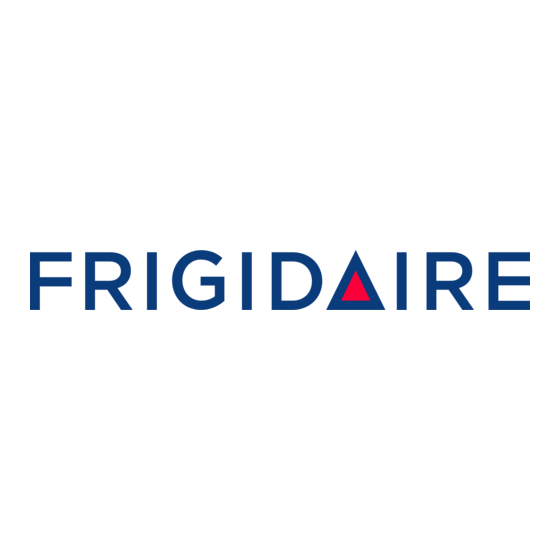
Publicidad
Idiomas disponibles
Idiomas disponibles
Enlaces rápidos
INSTALLATION INSTRUCTIONS
ELECTRIC BUILT-IN
INSTALLATION AND SERVICE MUST BE PERFORMED BY A QUALIFIED INSTALLER
SINGLE AND DOUBLE OVEN MODELS
IMPORTANT NOTE TO INSTALLER:
instructions completely and carefully. Be sure to leave these instruc-
tions with the consumer.
IMPORTANT NOTE TO CONSUMER:
use and care book for future reference. Observe all governing codes
and ordinances. Save these instructions for local inspectors.
Your new wall oven has been designed to fit a wide variety of cutout
sizes to make the job of installing easier.
installation should be to measure your current cutout dimensions and
compare them to the cutout dimension chart for your model shown on
page 2. You may find that little or no cabinet work will be necessary.
1. CARPENTRY
Refer to Figures 1 or 2 for the dimensions applicable to
your model oven, and the space necessary to receive the
oven. The oven support surface may be solid plywood or
similar material, however the surface must be level from
side to side and from front to rear.
2. ELECTRICAL REQUIREMENTS
OBSERVE ALL GOVERNING CODES
AND LOCAL ORDINANCES
IMPORTANT:
SAVE THESE INSTRUCTIONS FOR
THE LOCAL ELECTRICAL INSPECTOR'S USE.
A. A three-wire or four-wire single phase 120/240 Volt,
60 Hz AC only electrical supply (or three-wire or four-
wire 120/280 Volt if specified on nameplate) is required
on a separate circuit fused on both sides of the line
(time-delay fuse or circuit breaker is recommended). DO
NOT fuse neutral. The fuse size must not exceed the
circuit rating of the appliance specified on the
nameplate.
All manuals and user guides at all-guides.com
- 1 -
Before you begin – read these
Keep these instructions with your
The first step of your
NOTE: Wire sizes and connections must conform with
the fuse size and rating of the appliance in accordance
with the National Electrical Code and local codes and
ordinances.
WARNING:
AN EXTENSION CORD SHOULD NOT BE
USED WITH THIS APPLIANCE. SUCH USE MAY RESULT IN
A FIRE, ELECTRICAL SHOCK, OR OTHER PERSONAL
INJURY.
B. The appliance should be connected to the fused
disconnect (or circuit breaker) box through flexible
armored or non-metallic sheathed cable. The flexible
armored cable extending from the appliance should be
connected directly to the junction box. The junction box
should be located as shown in Figure 1 with as much
slack as possible remaining in the cable between the box
and the appliance, so it can be moved, if servicing is ever
necessary.
C. A suitable strain relief must be provided to attach
the flexible armored cable to the junction box.
318064300 (9806) Rev. B
Printed in Canada
Publicidad

Resumen de contenidos para Frigidaire ELECTRIC BUILT-IN
- Página 1 All manuals and user guides at all-guides.com INSTALLATION INSTRUCTIONS ELECTRIC BUILT-IN INSTALLATION AND SERVICE MUST BE PERFORMED BY A QUALIFIED INSTALLER SINGLE AND DOUBLE OVEN MODELS IMPORTANT NOTE TO INSTALLER: Before you begin – read these instructions completely and carefully. Be sure to leave these instruc- tions with the consumer.
- Página 2 All manuals and user guides at all-guides.com Allow at least 19-3/8” clearance for complete oven door 24” AND 27” SINGLE OVENS opening as show in FIGURE 8. DO NOT INSTALL THIS OVEN IN A BASE CABINET WITH A COUNTERTOP ABOVE IT. 1-1/2”...
- Página 3 All manuals and user guides at all-guides.com 3. HEIGHT ADJUSTMENT ON OVEN 4. ELECTRICAL CONNECTION Remove and lay aside the lower vent grille that is taped to It is the personal responsibility and obligation of the the outer side panel of the oven. The grille will be fastened customer to contact a qualified installer to assure that the to the lower front of the oven after it has been installed in electrical installation is adequate and is in conformance...
- Página 4 All manuals and user guides at all-guides.com 6. CHECKING OPERATION CAUTION: If connecting to a four-wire electrical system (mobile home) the appliance frame MUST NOT be connected to the neutral wire of the four-wire electrical SINGLE AND DOUBLE OVEN MODELS system.
- Página 5 All manuals and user guides at all-guides.com INSTRUCCIONES PARA LA INSTALACIÓN HORNO ELÉCTRICO EMPOTRADO LA INSTALACIÓN Y EL SERVICIO DEBE DE HACERLOS UN INSTALADOR CALIFICADO DOBLE Y SENCILLO MODELOS DE HORNO AVISO IMPORTANTE PARA EL INSTALADOR: Antes de empezar, lea con atención todas estas instrucciones.
-
Página 6: Hornos Sencillos De 24 Y 27 Pulgadas
All manuals and user guides at all-guides.com HORNOS SENCILLOS Deje por lo menos 19-3/8 pulgadas de espacio para que la puerta se pueda abrir completamente, como se DE 24 Y 27 PULGADAS indica en la figura 8. NO INSTALE ESTE HORNO EN LA PARTE DE ABAJO DE UN ARMARIO DE COCINA QUE TIENE UN MOSTRADOR ENCIMA. - Página 7 All manuals and user guides at all-guides.com 3. AJUSTE DE LA ALTURA DEL HORNO 4. CONEXIÓN ELÉCTRICA El usuario tiene la responsabilidad personal y la obligación Retire y deje a un lado la rejilla que está sujeta con cinta de utilizar un instalador calificado, para asegurar que la adhesiva al panel exterior del horno.
-
Página 8: Instalación
All manuals and user guides at all-guides.com 6. VERIFICACIÓN DEL FUNCIONAMIENTO ADVERTENCIA: Si está conectado a un sistema eléctrico de cuatro alambres (casa movible), el armazón del eletrodomestico NO TIENE QUE estar conectado al alambre MODELOS DE HORNO SENCILLO Y DOBLE neutro del sistema eléctrico de cuatro alambres.
